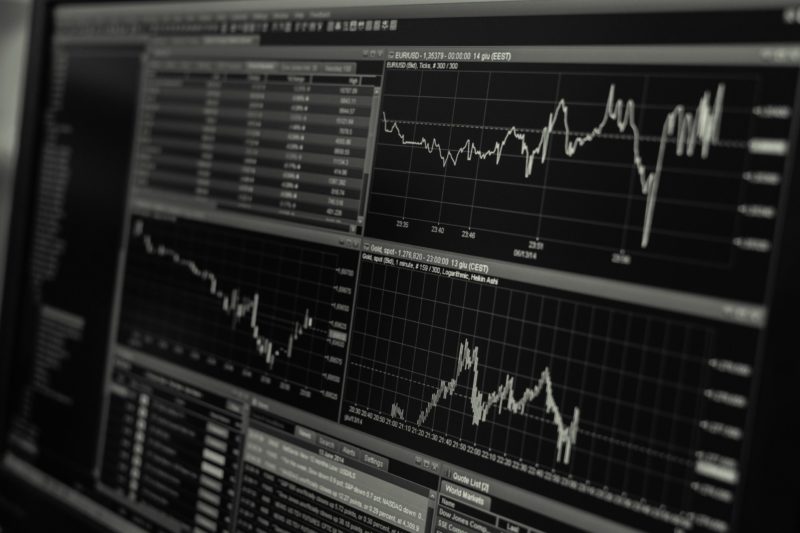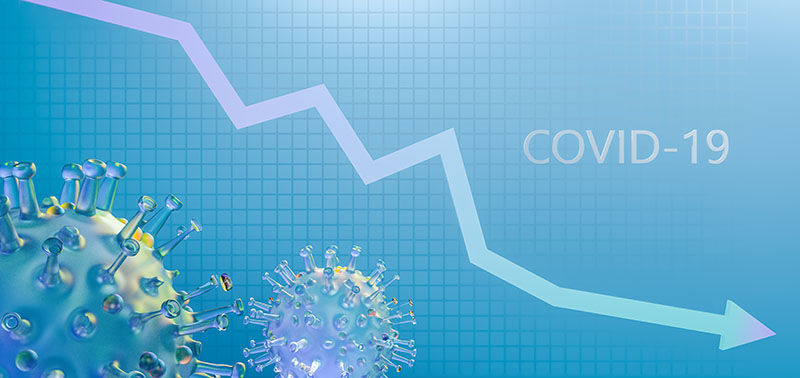As distributors adapt to changes sparked by the pandemic, it’s time to manage the post-crisis future. Identifying newly discovered strengths and weaknesses in your business is pivotal to such planning. In times of crisis, we discover which core capabilities help us survive, especially those that stood out relative to our competitors’. These differentiators should be highlighted as pillars of strength. Document them, anchor them and market them internally and externally as core to your value proposition.
We also can’t discount the valuable lessons to be learned from pandemic setbacks. For most, COVID-19 exposed inherent weaknesses that can be analyzed as opportunities for improvement. Doing so will not only strengthen your business, but it will also buoy your post-crisis recovery during continued unpredictable shifts in supply and demand.
In this article, we identify common challenges faced during the crisis. We’ll help you identify your strengths and weaknesses by asking you a series of questions relevant to these areas. Most importantly, we’ll plant the seeds of what you can do differently moving forward.
What have you learned during this crisis?
Peak performance lies at the intersection of best practices across the three critical components of any business: people, process and technology. Any weaknesses in these areas can significantly impede recovery and growth.
Process Challenges
Developing documented processes supported by core criteria is paramount when it comes to acting quickly. At a minimum, businesses with contingency plans and problem-solving architectures can better deal with one-off issues, such as managing the shortage of a single item, handling a poorly performing supplier or mitigating the liquidity risks of a particular customer.
To better understand where your performance may have suffered inordinately due to deficiencies of process, ask yourself the following questions:
Supplier Management: How quickly were you able to call on substitute suppliers in the face of critical shortages? Going forward, in the face of more uncertain or volatile demand, have you begun to reevaluate your vendor mix? Are you revisiting your process and criteria to onboard new vendors?
Product Allocation: Amid supply disruption, were you able to formalize criteria for allocating product to customers? Did you rely on any form of customer tiering, or stratification, to help coordinate and justify such allocations? Was your salesforce aligned with these policies?
Pricing Pressure: Were you able to maintain pricing discipline according to preexisting defined rules/procedures as dictated by sales management? How successfully did you trade off centralized pricing decisions and sales force pricing autonomy? Have you revisited pricing policies and rules that might require an update to establish more rigor, consistency, and responsiveness to customer needs?
Inventory Management: How well did you manage your inventory in the face of volatile demand? How has your outlook changed on inventory turns by supplier and product? Do you need a more rigorous process in terms of getting out in front of (and managing) slow-moving inventory? Is there a new urgency of updating/refreshing your stock/non-stock decision processes and criteria to avert future inventory imbalances?
Credit Challenges: Did you have sufficient credit policies in place (with associated tracking metrics) to identify customers that might carry greater credit risk, particularly when coupled with changing order size patterns (unanticipated increases in demand that might increase potential exposure)?
Technology Challenges
This crisis has also shined a light on the value of accurate, real-time data and forecasting capabilities. As year-over-year and quarter-over-quarter trends became irrelevant, businesses that have been unable to analyze weekly trends outside their standard software packages found themselves operating in the dark.
Moreover, companies that had not previously used analytics to develop and integrate ongoing performance evaluations across vendors, customers, products and market segments found themselves struggling to prioritize and respond to multiple, concurrent supply chain challenges. Such deficiencies resulted in headaches, including pricing inefficiencies, stock-outs, credit risk exposure and misallocation of resources across core vendors and customers. To diagnose and remedy your technology-related shortcomings, ask yourself:
Demand Forecasting: In the face of demand swings, were you able to produce reports that allowed you to override incorrect forecast assumptions generated in your ERP system? Were you able to quickly adjust to demand patterns weekly at all levels of granularity (customer segment, customer, product category, vendor, item)? Could you identify customers that were hoarding relative to their normal ordering patterns? How confident are you in reforecasting quickly (and frequently) going forward?
Vendor/Supply Performance: Were your systems able to track vendor performance throughout the pandemic, ideally through some form of supplier segmentation/stratification? Were you more reliant on the verbal assurances of vendors or could your systems identify and anticipate shortage/fill-rate risk against baseline patterns? Did you use data to adjust purchase orders or seek alternative sources?
Inventory Management: Did you find your inventory management system struggling to keep up with demand fluctuations? Did the pandemic uncover weak links in your system-established reorder points or safety stock levels? Do they need formal readjustment? Were you able to use revised forecasts to get emergency purchase orders out to vendors and replenish inventory before competitors did?
Logistics: Have you used analytics to monitor your shipping route capacity and profitability against expected changes in demand forecasts? Were you able to get the data that you needed to optimize routes on a timely basis in the face of rapidly changing demand? Do you have the data/analytics you need to analyze the potential for consolidating routes and/or outsourcing certain routes altogether (particularly as matched against truck lease expirations!).
Supply Chain Management: If you have multiple warehouses, do you have the information to digest relative performance across locations, particularly in light of changes in demand? Have you been able to digest the insights you need about which demand patterns may persist and which are reverting?
Credit Risk: How reliant were you on the verbal assurances of customers as far as credit risk? Did you have the data/analytics at your fingertips to confirm/refute those assurances? Was it available early enough to avoid mistakes associated with extending credit terms (or providing more credit)?
HR/Communications Systems: How quickly were you able to adapt to virtual team management and communication using new and existing technology platforms? Has your team been able to quickly access a central repository for updated rules, policies and standards? Do they reside somewhere other than email (someplace permanent and easily accessible by all key personnel, at any time, from any place)?
Data and Analytics Platforms: Did the crisis expose a need for more robust analytics and reporting capabilities (data visualization/business intelligence tools like Tableau or PowerBI)? If you operate multiple locations or subsidiaries, how well were you able to assemble and map data and analytics across those locations/subsidiaries to make coordinated decisions during the crisis? How well could you monitor relative performance by location/subsidiary?
People-related Challenges
It isn’t sufficient to have the best processes or the most sophisticated systems if companies don’t train their people to act under pressure and bridge the gap when standard processes or technology systems break down. The slightest hiccups in processes or rules can result in indecision if people don’t have the core training to pivot or improvise.
Likewise, powerful technology systems with sophisticated pricing or forecasting algorithms are only valuable when placed in the hands of teams that know how to leverage them and communicate their output.
Even then, it’s up to people to pick up the slack when systems break down as they have in the pandemic. Performance comes down to the appropriate mix of science (process and technology) and art (people). To understand how to evaluate people-related weaknesses during the crisis, ask yourself:
Customer Interactions: Were you more proactive or reactive with customers’ needs during the crisis? Did you leverage customer segmentation/stratification to prioritize proactive outreach? Were you able to work creatively with customers when asked for discounts or payment terms? Did you prioritize core customers? Did you make sure discounts or terms were analytically justifiable?
Virtual Selling: How has your salesforce adapted to a virtual sales model? In what ways have they been hampered, and have you fully vetted and addressed their key concerns? Have they been able to use virtual tools while still maintaining emotional connection with customers?
Sales Force Effectiveness: How proactive were you in maintaining morale with your sales force in the face of variable comp plan disruption? Have you been able to reset forecast expectations and creatively adjust certain compensation components to maintain motivation amidst changing projections?
Supply Disruption Communications: In the face of shortages, were your salespeople proactively taking the opportunity to promote/substitute strategically aligned vendors or products (i.e. those offering varying degrees of exclusivity or carrying higher margins)? Were the front lines encouraged/trained to make that conscious push (and did they have the information they needed to do so)?
Vendor Communications: Where did you fall on the spectrum of being proactive or reactive with vendor outreach? Did you formally have vendor stratification in place to help you prioritize that outreach and shore up risk with your most important vendors? Did you have data at your fingertips when you did?
Value Proposition Refinement: Have you had the chance to identify and document the areas in which you excelled in your management of the pandemic? Have you reshaped your value proposition accordingly? Have you discussed this with your team? Have you begun to integrate any related messaging into your marketing outreach to both clients and prospects?
Strategic and Tactical Review: Have you documented any of your key learnings around breakdowns in performance during the crisis? Have you strategically shared them with your team to identify root causes and create a game plan to address them? Have you identified employee training in any key areas where the pandemic may have exposed shortcomings?
New Strengths
One of the main reasons for focusing on shortcomings and proactively addressing them is that the market will continue to change. Business will not look like it did before or during the pandemic, and we will continue to have unpredictable supply and demand patterns. With multiple factors at play, no one vendor is going to respond like any other, and no one customer is going to behave or react like any other.
There is a distinct possibility of regional slowdowns over the coming months. Any subsequent COVID-19 outbreaks will have their own shape and length.
Knowing this about the market, how prepared are you? To learn from your weaknesses, answer the above questions concerning people, process and technology to discover where you can improve and adjust your strategy.
Brent Johnstone is co-founder and managing director of ActVantage. Contact him at bjohnstone@actvantage.com or visit actvantage.com.
Related Posts
-
The Index offers distributors a weekly quantified view into how other distributors in the industry…
-
Indian River Consulting Group’s (IRCG) weekly Pandemic Revenue Index for the work week of June…
-
The 11.4% decline is the third in a row after a rare uptick in late…






